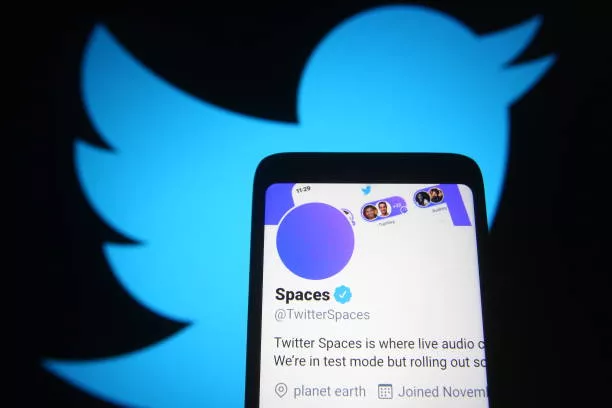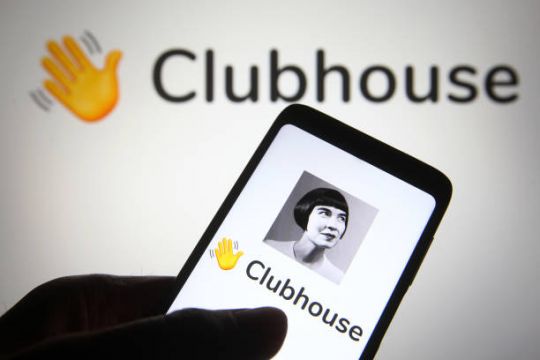While texting has slowly been taken over by messaging apps like WhatsApp and Facebook Messenger, recently live audio apps like Clubhouse and Twitter Spaces have started to gain more traction.
With people having more time on their hands staying at home, the Clubhouse app started at the perfect time around March 2020.
Twitter sensed an opportunity to roll out a similar feature of their own and in November 2020 it introduced Spaces.
What is a live audio app?
A live audio app lets you host audio chat rooms where people can converse and invite others to join in the conversation.
The rooms are based around different topics where listeners can give advice or partake in discussion. In many ways it is like listening to a live podcast, but one you can be a part of.
What is unique about live audio is that there is a limit to the amount of people who can join, and in some instances like on Clubhouse you can only join if you receive an invite from someone else.
What is the Clubhouse app?
Clubhouse is a live audio app that is the brainchild of entrepreneur Paul Davison and former Google engineer Rohan Seth.
It is an invite-only app, further adding to the exclusive aura surrounding it.
Once inside you can join virtual rooms to discuss a range of topics such as tech, politics, music and more.
Each room has moderators who control who can take the floor, a list of speakers, and the rest are listeners. Listeners can also virtually raise their hand if they want to speak or ask a question.
The app spiked in popularity early this year, when celebrity billionaire Elon Musk and others appeared in audio chats.
What is Twitter Spaces?
Billed as a competitor to Clubhouse, Twitter Spaces gives the option for users to charge admission to their live audio chat rooms in a bid to court more content creators to their platform,
At the beginning only some users were part of Twitter's pilot testing. Since May 3rd however any user with at least 600 followers can host a Space.
On Twitter for iOS and Android, when someone you follow starts or speaks in a Space, it will appear at the top of your timeline as a purple bubble for as long as it is live.
When you join a Space as a listener, you can react to what you hear with emojis, check out any pinned Tweets, follow along with captions, Tweet or DM the Space, or request to speak.
Unlike Clubhouse, the host can choose who they want in a Space. You can add up to 10 speakers and can choose anyone to be a speaker, people you follow or only those you invite.

So is this the new way to communicate?
Despite have a huge spike in popularity early on, there are signs that Clubhouse in particular is starting to wane.
Downloads of the app have significantly fallen recently. After peaking in February with 9.6 million downloads, that number fell to 2.7 million in March and then 900,000 downloads in April.
The drop has sparked questions about its long term viability and whether its success was owed in part to people spending more time at home during the pandemic.
Clubhouse introduced a test version of its app to Google's Android users in the United States on May 9th, in a bid to expand its market.
The long anticipated Android launch is expected to reach more new users globally. The Android version will reach other English-speaking markets and then the rest of the globe days and weeks after the U.S. market beta launch.
It remains to be seen if Spaces suffers a similar dip in popularity, as people start to get back to a more normal working routine.
Have there been any issues surrounding them?
With it being live audio rooms, there has been some concern about the dilemma of moderation.
The popularity of Clubhouse has drawn scrutiny over how it handles problematic content, from hate speech to harassment and misinformation.
Tools to detect problematic audio content lag behind those used to identify text, and transcribing and examining recorded voice chats is a more cumbersome process for people and machines.
A lack of extra clues, like the visual signals of video or accompanying text comments, can also make it more challenging.

On a more serious note, back in February Chinese authorities blocked access to Clubhouse because it allowed people to discuss sensitive topics with people abroad including Taiwan and treatment of the country’s Muslim minority.
President Xi Jinping’s government refuses to acknowledge the existence of its internet filters, but researchers abroad trace blockages to servers within state-owned China Telecom Ltd through which internet traffic into and out of China is required to pass.
Mr Xi’s government promotes what it calls “internet sovereignty”, or the right of political leaders to limit what their publics see online.
Clubhouse temporarily gave Chinese users an uncensored forum to talk about politically sensitive issues.







